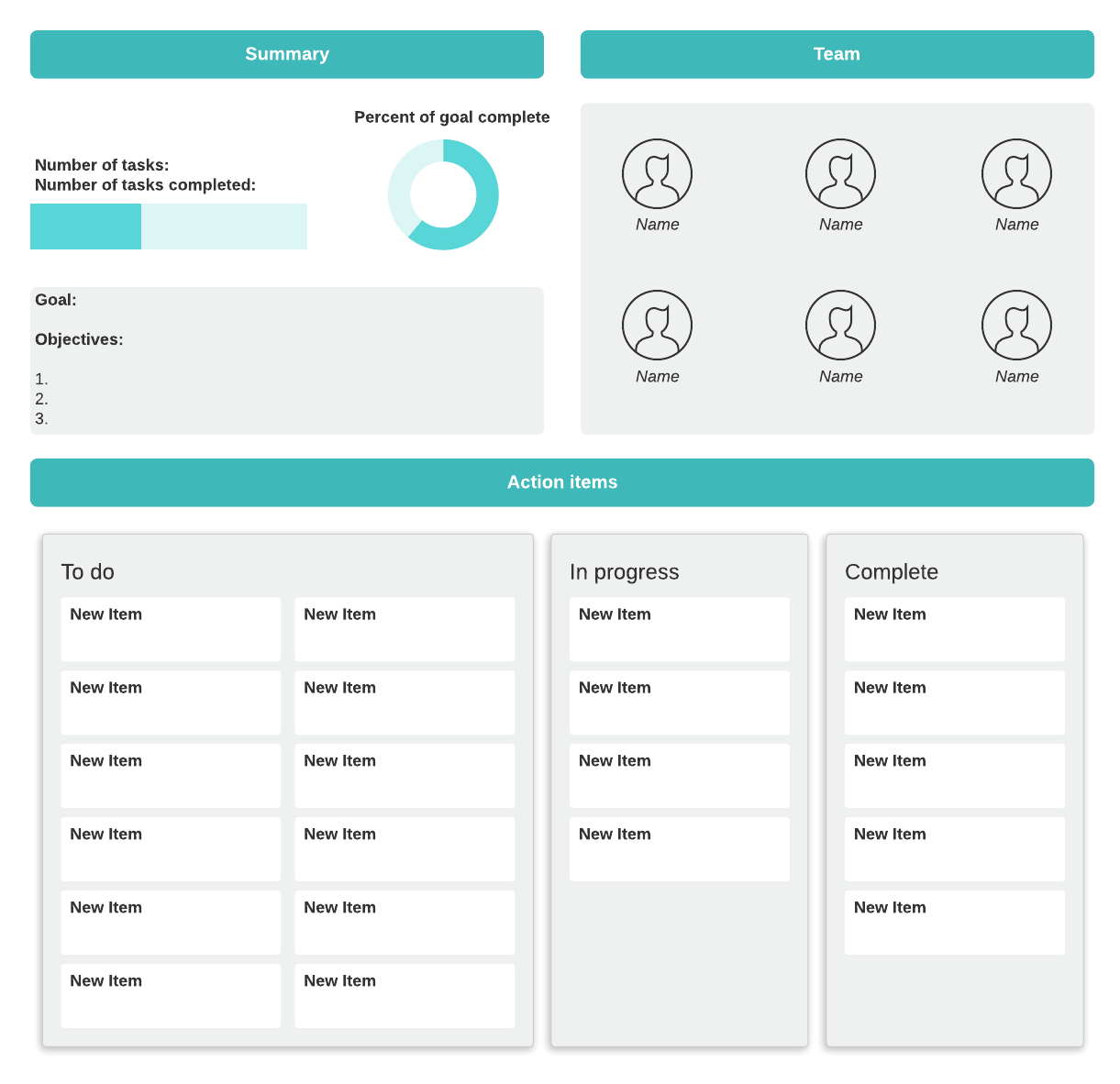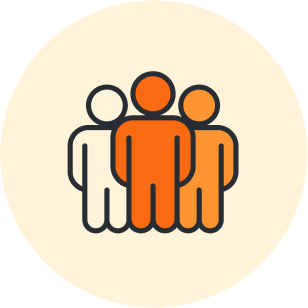
What is organizational development: All about process, goals, and benefits
Reading time: about 6 min
What is organizational development?
Imagine that you’ve just become president of a small island nation that’s beset with problems. When campaigning, you said you were committed to improving conditions on the island, but when you actually take office, you only focus on improving the ports. The ports definitely improve, but the rest of the island—from its people to its finances—falls into total chaos. That’s because it’s not enough to focus on one area when improving a complex organization. And that brings us to organizational development.
Organizational development focuses on improving effectiveness and health through planned change. It takes a systematic approach to improving an organization's processes, culture, and structures to enhance overall performance and make it more competitive in the broader market.
In our island example, if the organizational development process were adopted, every single facet of the island would have been affected, leading to improvement in every area and an overall healthier nation.
Since organizational development isn’t focused in a single area, it makes sense that it requires two primary things: a coordinated effort across the organization that involves everyone striving in the same direction and plenty of time to allow the change to take place. But, because organizational development is such an immense undertaking, its payoff is similarly impressive—it creates true, integrated, sustained improvements over time.
History of the organizational development process
Organizational development doesn’t happen overnight, and it wasn’t invented overnight. Its origins lie at the beginning of the 20th century, when Frederick Taylor pioneered scientific management. Focusing on standardization and time studies, this approach laid the groundwork for OD practices.
Then, in the 1940s, Kurt Lewin introduced the "Unfreeze-Change-Refreeze" model, which became foundational to OD theory. But it wasn’t until the 1960s that the term “organizational development” was born. That’s when practitioners like Richard Beckhard and Chris Argyris emphasized planned change, participative management, and organizational learning. Their introduction was critical for organizations trying to survive the economic turmoil of the 1970s and 1980s, when OD was pressure-tested.
Now, with the rise of globalization and technology, OD practices are being adapted to new challenges such as virtual teams, global leadership, and rapid technological change. OD now also commonly incorporates agile methodologies and employee wellbeing.
The goals of organizational development
Don’t just assume that the goal of OD is to have a healthier bottom line—the goal of undertaking OD is largely determined by the type of organization engaging in the process. For a hospital, it could be improving organizational effectiveness. A nonprofit could want improvements to organizational culture. Whatever your org’s goal may be, it’s critical to identify the desired outcomes before undergoing OD. Otherwise, there’s no North Star to guide the organization towards.
Challenges to organizational change and development
OD isn’t easy. It’s essential to understand the challenges you’re likely to encounter before you start so you have a plan for overcoming these challenges:
-
Resistance: Employees may not be on board with OD, which can undermine change. Deeply ingrained organizational cultures can be challenging to alter.
-
Lack of clear objectives: If you don’t articulate where you’re headed, employees will struggle to understand the purpose of the change, leading to confusion and lack of alignment.
-
Poor leadership: Leaders play a critical role in modeling the desired behaviors and championing change. Without strong leadership, change can’t happen.
-
Poor planning: Effective change management requires careful planning and execution. It must be determined before beginning the change and monitored throughout it to mitigate implementation challenges.
-
Complexity: Organizations are often incredibly complex. That means changes in one area can have unintended consequences on other areas, creating additional challenges for coordination and alignment.
-
The market: A changing economy, emerging competitors, and even regulatory changes can impact the effectiveness and timing of organizational change initiatives. Sometimes, it all comes down to poor timing.
The process of organizational development
Hopefully, the above challenges aren’t discouraging you from undertaking organizational development—they’re meant to inform and prepare you for the process, not to discourage you from undertaking it. Let’s be clear: OD is worth it. So here’s how to get it done.
1: Identify what needs to be changed
Use data to inform yourself about what needs to change by administering surveys, conducting interviews, and making observations to gather information about current organizational practices and issues.
2: Analyze data
Assess the data objectively to identify strengths, weaknesses, opportunities, and threats. This is a great time to utilize our SWOT analysis generator to guide the process.
3: Make an action plan
Once you have defined clear, measurable goals for the development process, it’s time to outline specific steps, resources needed, timelines, and responsibilities to reach the goals. We have several action plan templates to eliminate the guesswork of creating your plan.

4: Monitor and evaluate
OD must be guided as it’s implemented to ensure challenges can be quickly addressed. An easy way to keep track of tasks. That way, you’ll be able to see at a glance what’s been completed and what’s potentially going off track. Another option is to use an OKR planning chart to take a holistic view of the OD implementation. This way, you can make necessary adjustments to improve outcomes or address unforeseen issues.
It’s important not to just guess that your plans are improving your organization. Use metrics and feedback to assess the effectiveness of the interventions. Then, evaluate whether the changes have led to improvements across the organization.
5: Sustain the change
Sustaining OD means ensuring new practices and behaviors are integrated into the organization’s culture and processes in perpetuity. This requires fostering a culture of ongoing development and responsiveness to change that adapts to the market while adhering to the organization's goal. After a while, new strategies become the status quo.
Organizational development helps your organization move forward in a changing world. It provides tools and strategies to help adapt to market changes, technological advancements, and other external pressures, and it can improve employees’ overall well-being at the same time. Best of all, OD is tailored to fit the organization’s needs, so it can adapt to whatever goals are set. With careful implementation and sustained adherence to the goals over time, OD can overhaul an org and set it on a renewed path to success.

Learn about the best change management strategies for a modern workforce.
Go nowAbout Lucidchart
Lucidchart, a cloud-based intelligent diagramming application, is a core component of Lucid Software's Visual Collaboration Suite. This intuitive, cloud-based solution empowers teams to collaborate in real-time to build flowcharts, mockups, UML diagrams, customer journey maps, and more. Lucidchart propels teams forward to build the future faster. Lucid is proud to serve top businesses around the world, including customers such as Google, GE, and NBC Universal, and 99% of the Fortune 500. Lucid partners with industry leaders, including Google, Atlassian, and Microsoft. Since its founding, Lucid has received numerous awards for its products, business, and workplace culture. For more information, visit lucidchart.com.
Related articles
7 fundamental change management models
Change management generally refers to how teams and companies implement organizational change. Learn 7 tried-and-true change management models that organizations return to again and again.
5 organizational factors to consider when determining team structure
Whether you're a small startup or an establish enterprise, there's more to organizational design than just the traditional hierarchy. Learn the five factors that influence organizational structure so you can optimize your team and grow your business.
40 questions to ask when creating new processes
In this blog post, we will uncover 40 different questions to ask when implementing new processes.
Using the ADKAR change management model
The ADKAR change model has been proven to help individuals understand change so companies can successfully innovate. Learn what ADKAR is and how to implement it.
